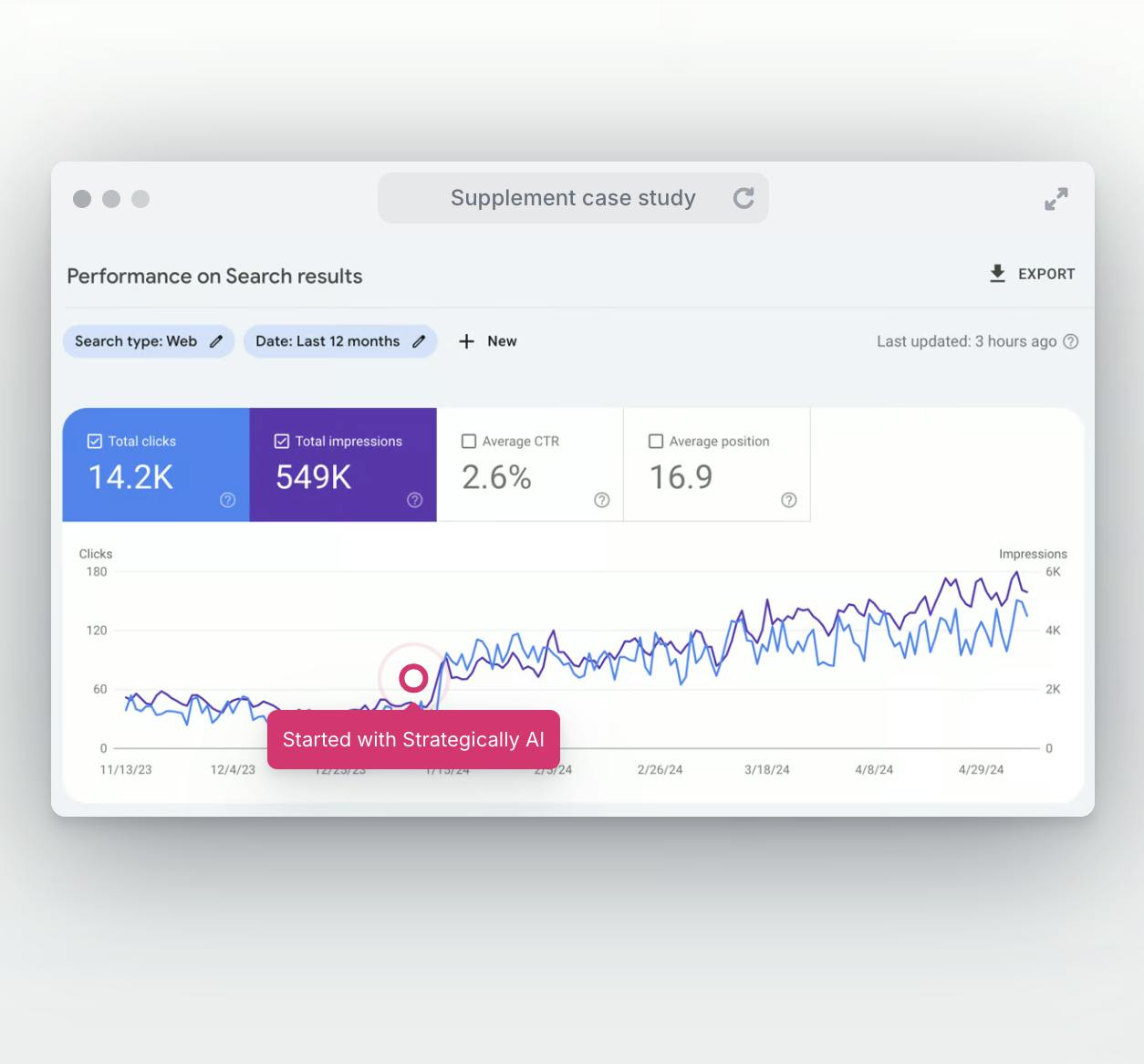

Founder of Strategically.co, we’ve created over 10 million words of impactful content, driving organic traffic growth for more than 300 businesses.
Whether it's a professional letter for a job application, a letter of inquiry, or a resignation letter, the stakes are high, and the rules are strict.
But don't worry, we've got you covered. We'll delve into the nitty-gritty of crafting the perfect subject line, listing your contact information, and composing a compelling body paragraph. We'll also explore different business letter formats, including MLA and APA, and provide you with practical examples and templates to help you write a professional letter that leaves a lasting impression.
So, whether you're a seasoned professional or a novice writer, buckle up and get ready to master the art of formal letter writing. Let's dive in!
Formal letters are not just about following a set structure or using a professional tone. They are about effectively communicating your intentions, establishing credibility, and building professional relationships. Whether you're applying for a job, making a business inquiry, or lodging a complaint, a well-crafted formal letter can make a world of difference.
Formal letters are a crucial tool in professional communication. They are typically used in situations that require a formal tone and an official approach. For instance, when applying for a job, a well-crafted formal letter can display your sophistication and command over language. Similarly, if you're addressing an authority or a professional contact, a formal letter format is the way to go.
The decision to use a formal letter often depends on the recipient and the nature of your interaction with them. If you're communicating with a business, government agency, or an individual with whom you don't have a personal relationship, a formal letter is the best choice. It lays a solid foundation for building a professional relationship and ensures your message is received with the seriousness it deserves.
In contrast, if you're communicating with friends, family, or acquaintances, an informal letter or email might be more appropriate. These can be conversational and personal, covering topics like personal news, congratulations, or invitations.
Get a demo and discover how eCommerce brands use Strategically AI to drive sessions, grow revenue, and reduce reliance on paid ads.

This section will walk you through the process of how to write a formal letter, from including your contact information to proofreading your final draft.
Starting to write a formal letter begins with your name and contact information. This is typically placed in the upper left-hand corner of the letter. Your name, or your company's name if you're representing one, should be the first line.
The goal is to provide clear and concise information. This allows the recipient to know who the letter is from and how to contact the sender if necessary.
When writing a formal letter, it's crucial to include the recipient's name and contact information. Start by writing the recipient's name, followed by their official title, such as Mr., Mrs., Miss, or Ms. This shows respect and professionalism.
Next, include their job title if applicable. This is especially important if you're writing to someone in a large organization where roles and responsibilities may vary.
Following the job title, write the name of their company. This helps to ensure your letter reaches the right place, especially in larger organizations.
Crafting the subject line of a formal letter is a crucial step that requires careful thought. It's the first thing the recipient sees and can set the tone for the rest of your letter. The subject line should be concise, clear, and directly related to the purpose of your letter. It's not a place for fluff or unnecessary details.
In some letter formats, such as the AMS style, the subject line is written in all caps. This is to draw attention and make it stand out. However, this is not a hard and fast rule and may not be necessary in all types of formal letters.
The subject line is your first impression. Make it count. It can be the difference between your letter being read or ignored. So, take your time to craft a subject line that accurately represents the content of your letter.
The body of a formal letter is where you convey your main message. Start by introducing yourself and stating the purpose of your letter. This initial paragraph should be concise and direct, setting the tone for the rest of the letter.
In the following paragraph, delve into the details of your message. This is where you can provide supporting information or elaborate on the reasons behind your letter. Remember to keep your language professional and avoid any jargon or slang.
The final paragraph of your letter should summarize your main points and indicate the next steps. This could be a call to action, such as requesting a response or suggesting a meeting. It's also a good place to express gratitude to the recipient for their time and consideration.
Closing a formal letter is just as important as the body of the letter itself. It's the final touch that leaves a lasting impression on the reader. The closing should be professional and respectful, reflecting the tone of the rest of the letter. Common sign-offs include:
After the sign-off, leave a space for your signature. Sign your name, then print it underneath in capital letters. If you think the recipient might not know your gender, you can include your title in brackets after your name. This is also a good place to include your contact information, such as your phone number and email address.
The closing of your letter is your final opportunity to make a professional impression. Make it count!
Proofreading is the final yet crucial step in the process of how to write a formal letter. It's your last line of defense against errors that could potentially undermine the professionalism of your letter.
Start by reading your letter aloud. This technique helps you catch awkward phrasing and run-on sentences that you might have missed while writing.
Next, check for spelling and grammar errors. Even the most minor mistake can distract your reader and detract from the message you're trying to convey.
Whether you're writing a formal letter to a conservative company or a more liberal one, the format you choose can significantly impact how your message is received. Let's delve into the intricacies of these formats and learn how to use them effectively.
The MLA letter format, a set of guidelines recommended by the Modern Language Association, is a popular choice for formal letter writing in academic settings. This format is designed to ensure clarity, consistency, and proper organization in written communication. It's like a formal letter template that helps writers maintain professionalism while adhering to academic standards.
The format includes specific guidelines for various elements of a letter. The heading, date, recipient's address, salutation, body paragraphs, closing, and signature all have their place and style in an MLA letter.
The primary purpose of using the MLA letter format is to convey ideas in a uniform and professional manner effectively. It's not just about writing a letter; it's about crafting a piece of communication that is clear, concise, and respectful of the reader's time.
So, whether you're writing a cover letter for a research paper or submitting correspondences to scholarly journals, the MLA letter format can be your guide to creating a well-structured, professional business letter.
The APA letter format, an acronym for the American Psychological Association letter format, is a widely recognized standard in the realm of psychology and other social sciences. This format is designed to ensure consistency and clarity in academic communication, making it a go-to choice for research papers, professional letters, and manuscripts.
The APA letter format is more than just a set of rules for fonts, margins, and spacing. It's a tool that enhances communication within the academic community by ensuring that ideas and information are conveyed accurately and effectively. It includes specific guidelines for the placement of addresses, dates, salutations, subject lines, body paragraphs, and signatures.
The emphasis of the APA letter format is on readability and organization. It encourages the use of clear headings, concise and formal language, and proper referencing. This format is all about maintaining consistency and professionalism in correspondence, making it an essential skill for anyone involved in academic or professional writing.
From choosing the right sign-off to including a handwritten signature, every element plays a crucial role in the overall impact of your letter.
Just like an email signature, choosing the right sign-off for your formal letter is crucial. It's the final touch that leaves an impression on the reader. The sign-off you choose should reflect the tone and purpose of your letter. For instance, if you're writing a business letter, a formal sign-off like "Yours sincerely" or "Best regards" is appropriate.
On the other hand, if you're writing a professional letter and know the recipient's name, using "Yours faithfully" is a good choice. Remember, the sign-off is not just a formality; it's a part of your letter that conveys respect and professionalism.
Mastering the art of formal letter writing is all about paying attention to details, and choosing the right sign-off is one important detail.
The inclusion of a handwritten signature at the end of a formal letter is a crucial step that should not be overlooked. It adds a personal touch and authenticity to your correspondence, making it more professional and credible.
When writing a business letter, after your closing remarks, leave a space for your signature. This space is typically four lines, enough to accommodate your handwritten signature.
The way you close your letter and include your signature can leave a lasting impression. So, take the time to do it right and maintain the professional tone of your letter.
Whether you're crafting a business letter, a reference letter, or a letter of inquiry, understanding the specific guidelines and formats is key. From including your name and contact information to choosing the right sign-off, every detail matters in conveying your message effectively and professionally.
With practice and attention to detail, you can master the art of formal letter writing and make a lasting impression in your professional communications.
If you're stuck with what to write, consider using Strategically AI, a content platform to plan and build content.
Get a demo and discover how eCommerce brands use Strategically AI to drive sessions, grow revenue, and reduce reliance on paid ads.